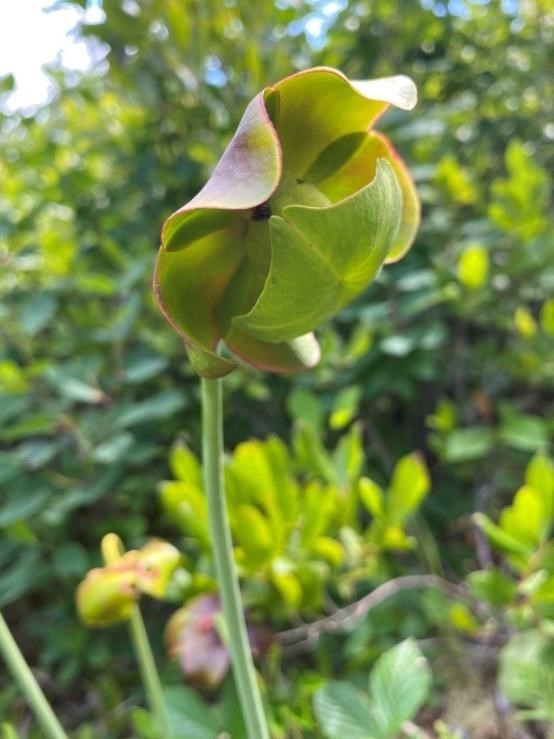Last updated: October 28, 2020
Article
Carnivorous Plants at Acadia

NPS Photo/Crystal Lewis
Mini "monsters" of Acadia's bogs
There are two species of carnivorous plants that can be found in Acadia National Park; the Round leaf Sundew (Drosera rotundifolia) and the Northern Pitcher Plant (Sarracenia purpurea). Though very different in stature, they are found in the same habitat. Both species are adapted to flourish in nutrient depleted soils and prefer to grow in bogs and marshes, often atop patches of sphagnum moss. To compensate for the lack of nutrients, these plants have unique characteristics that allow them to trap unsuspecting insects.
Sundews
Sundews have a slightly different approach. This species is covered in short hairs coated in a sticky substance to attract and ensnare insects. The insects inevitably get caught in the hairs, are then engulfed by the plant, and broken down with digestive enzymes.

NPS Photo/Bre Brown
Pitcher Plants
Pitcher plants have tall reddish purple blossoms often seen protruding from boggy areas in the spring and hollow leaves or pitchers. The pitchers naturally fill with rain water and these shallow pools attract insects. Once inside the pitcher, insects are confronted with downward pointing, stiff hairs along the plants surface making escape very difficult. When the insect eventually falls to the base of the pitcher, digestive enzymes are released allowing the plant to absorb the nutrients from its prey. Next time you’re exploring the wetlands of Acadia, keep your eyes peeled for these impressive plants.
Where to Look
Given its name, you may see sundews along the Sundew Trail at Schoodic Peninsula. Also look closely around the Witch Hole Pond area, a short walk or bicycle ride from Hulls Cove Visitor Center. Next time you’re exploring any wetlands of Acadia, keep your eyes peeled for these impressive plants.
